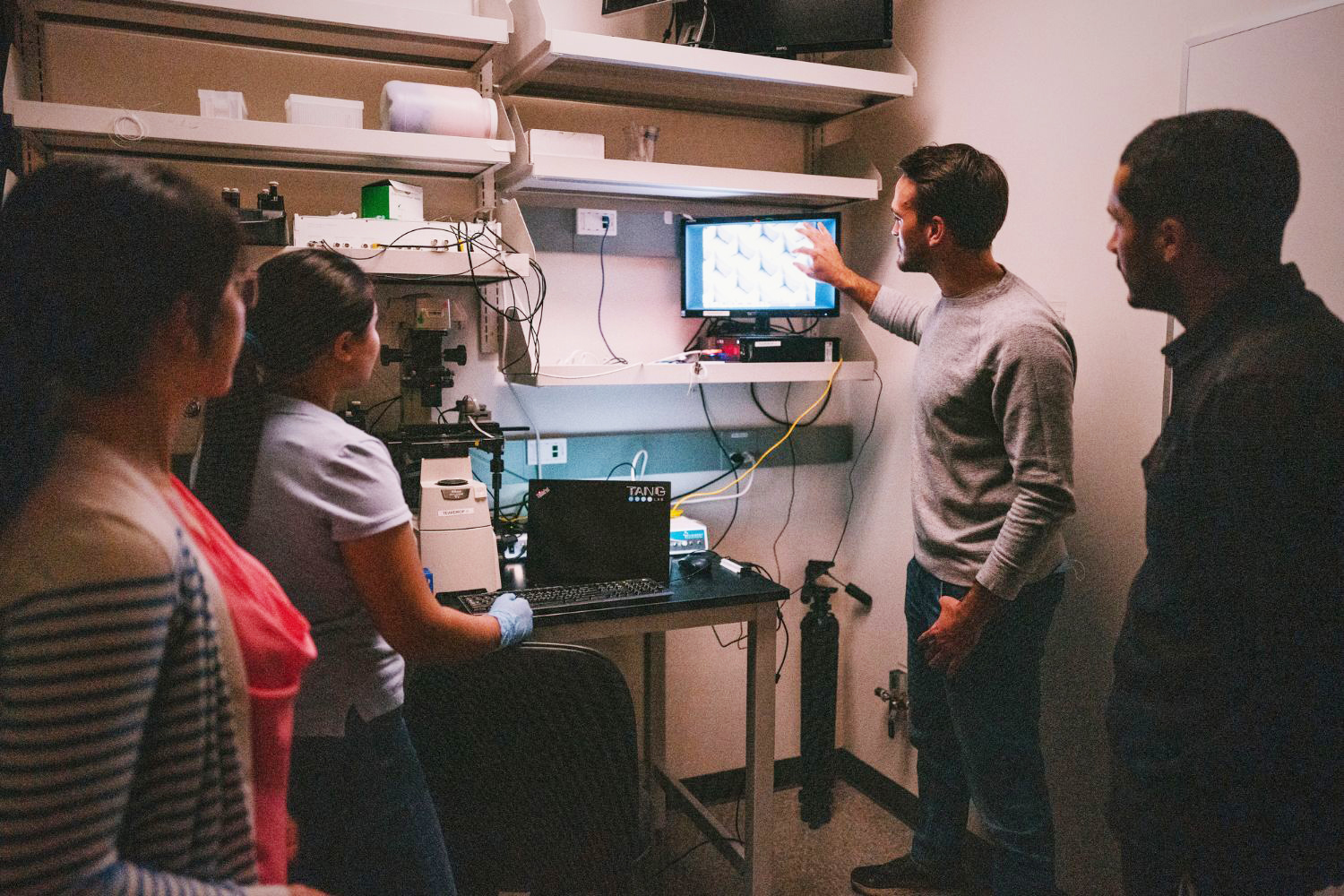It Slices and Dices... Lab Tissue?
It Slices and Dices... Lab Tissue?


New tools developed at Stanford aim to help researchers quickly turn out scores of uniformly sized tissue samples to speed simultaneous research efforts.
Think of the microDicer and microGrater as Veg-O-Matics for the medical lab, slicing tissues into tiny cubes or slices that are uniform and are more like a whole tumor than, say, a single-cell sample. These sample cutters promise to make life less dreary for researchers and to create organoids that could improve cancer research and treatment.
Comparisons to a kitchen device aren’t flights of fancy either.
“We came up with the idea to have a micro-sized French fry press to dice the tissue,” said Seth C. Cordts, who as a graduate student at Stanford University School of Engineering was the lead author of “Microdissection tools to generate organoids for modeling the tumor immune microenvironment,” recently published in Microsystems & Nanoengineering.
The project started as an idea by Sindy Tang, an associate professor of mechanical engineering at Stanford. She created a product design class called Advanced Micro and Nano Fabrication Laboratory, in which students prototyped the microDicer and microGrater.
“(It’s) hard to cut tissues into desired dimensions by hand,” Tang said. The traditional way researchers painstakingly take off submillimeter-sized pieces of tumors requires scissors, scalpels, and steady hands—and a lot of patience.
Additionally, each tissue sample poses its own challenges.
Check This Out: Miniature Robots to Navigate Blood Vessel Networks
“Early on, I shadowed and spoke with researchers from different labs at Stanford to understand what their current process flow looked like for dissecting tumor tissue,” Cordts said. “One of the main challenges I noticed was how different each tumor biopsy can be in terms of composition, stiffness, and texture. From my own experience handling biopsy samples, it is very difficult to do any cutting with precision and consistency since the biopsy samples are often slippery and nonhomogeneous.”
The microDicer was designed first, “aiming to improve the precision of tissue dissection into uniformly sized microtissues,” Cordts said. The dicer’s blades are hexagonal sections with sharp edges, arranged like a honeycomb, upon which a slice of tumor is laid atop and pushed through, creating cube-like pieces.
“The microDicers had a hexagonal pattern, instead of the square pattern used in prior work, to reduce the cut surface area-to-volume ratio and stress concentration at the corners. This pattern was expected to reduce cell damage and promote the overall viability of microtissues,” the paper explained.
Tang and Cordts added that due to the geometry and other requirements, the team decided to use silicon for the microDicer.
“It is very hard and can be made to form sharp edges,” Cordts said. “Stanford has a comprehensive nanofabrication facility that we used to develop the process and fabricate the microDicer. We considered methods like 3D printing, but to create many devices with sharp and durable edges, it wouldn't be economical. With silicon microfabrication, we were able to make many devices—up to 60—simultaneously.”
For the microDicer, fabricators used reactive ion etching, or RIE, a type of “dry etching” method.
Discover the Benefits of ASME Membership
“In this process, the silicon substrate is placed into a chamber where the combination of the reactive gases and an electric field generates the ions that react with the silicon surface, etching material away,” Cordts explained. “To control what parts of the silicon are etched, we strategically design and pattern a ‘mask’ [similar to a drawing stencil], which is made of a less reactive material that protects areas of silicon from being etched.”
When testing the dicer, the team realized the process of dissecting tissue was relatively slow compared to manual methods, and “for some tough tissues, the hard yet brittle silicon could crack and break,” Cordts said. “To make improvements on the speed of processing and durability, I designed the microGrater to mimic a microscale cheese grater.”
Users rub a piece of tumor across its blades, which look like rounded rectangles that are a half millimeter long, to very quickly cut thin fragments of tissue.
The microGrater was designed using stainless steel due to the material’s biocompatibility and durability and was made by an outsourced company, Tang and Cordts noted. Fabricators used a “wet etching” method, spraying a reactive chemical onto the steel, where it etched parts that weren’t masked.
Besides eliminating drudgery for lab workers, the two devices also create samples that are better suited to studying tumors, cancer cells, and treatment.
More for You: Virtual Reality Goggles for the Skin
“It is necessary to dissect tumor samples into smaller microtissues in order to culture and keep the cells alive,” Cordts said. Traditional cutting methods were inconsistent and yielded a wide size range of microtissues.
“There has not been much research done to study the direct link between the dimensions of the tumor microtissues/organoids and how they grow or respond to treatment,” Cordts added. The microtools were designed “to produce more uniformly sized microtissues so that we could begin to study how size may affect the viability and drug response of microtissues in culture.”
Already, researchers have diced and grated their way to unexpected discoveries. When studying mouse tumors, “the surprise was the larger organoids have better viability than the smaller ones,” Tang said. Further experiments are needed to compare the viability of samples ranging from 200 to 800 microns.
Next steps in developing the mini slicers include automation, improving blade sharpness, and testing on other types of tissues. But the tiny tools could someday be used to take samples from a tumor biopsy and test different types of treatments, all at once, determining the best course of treatment for the patient right then and there.
Eydie Cubarrubia is an independent writer in New York City.




